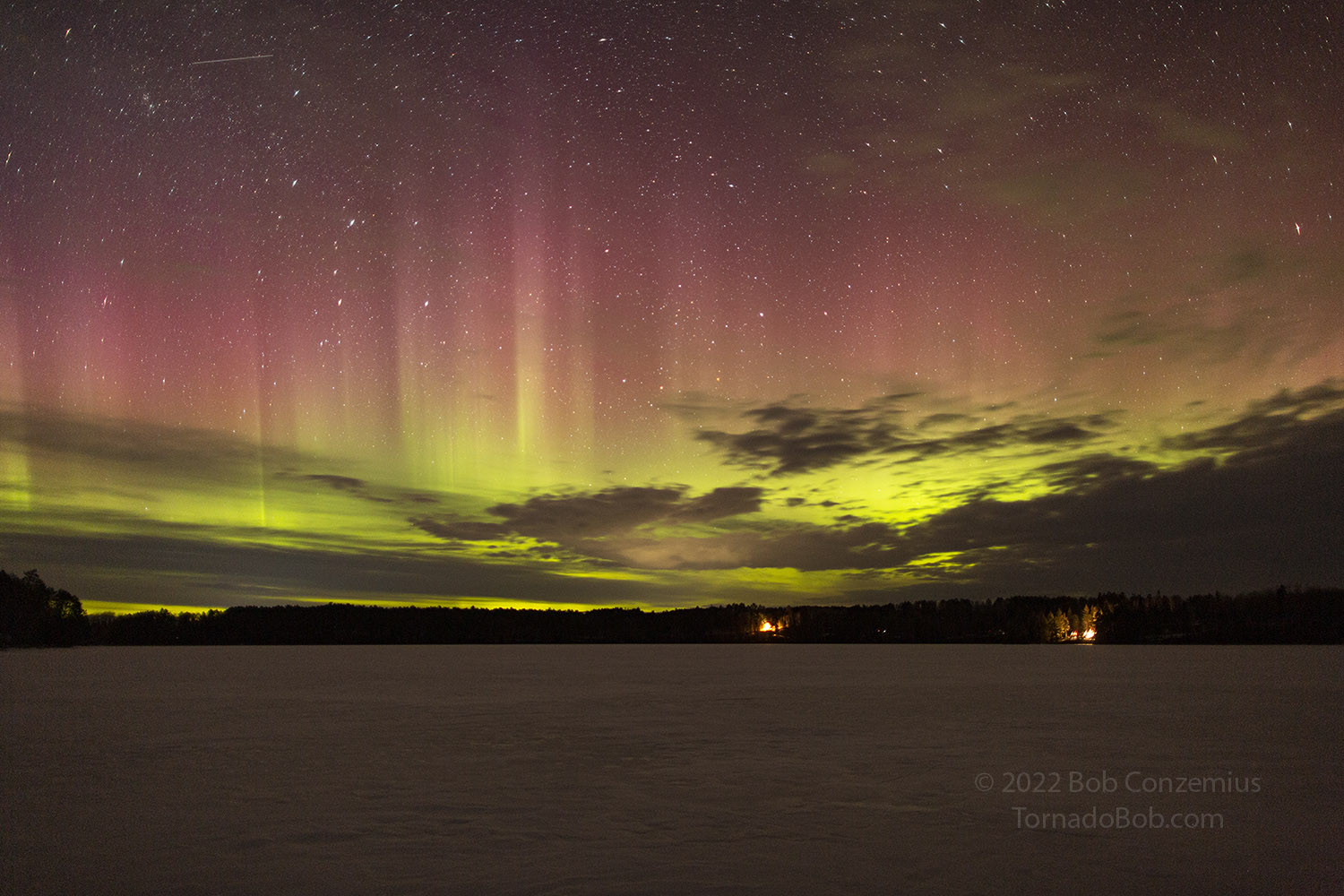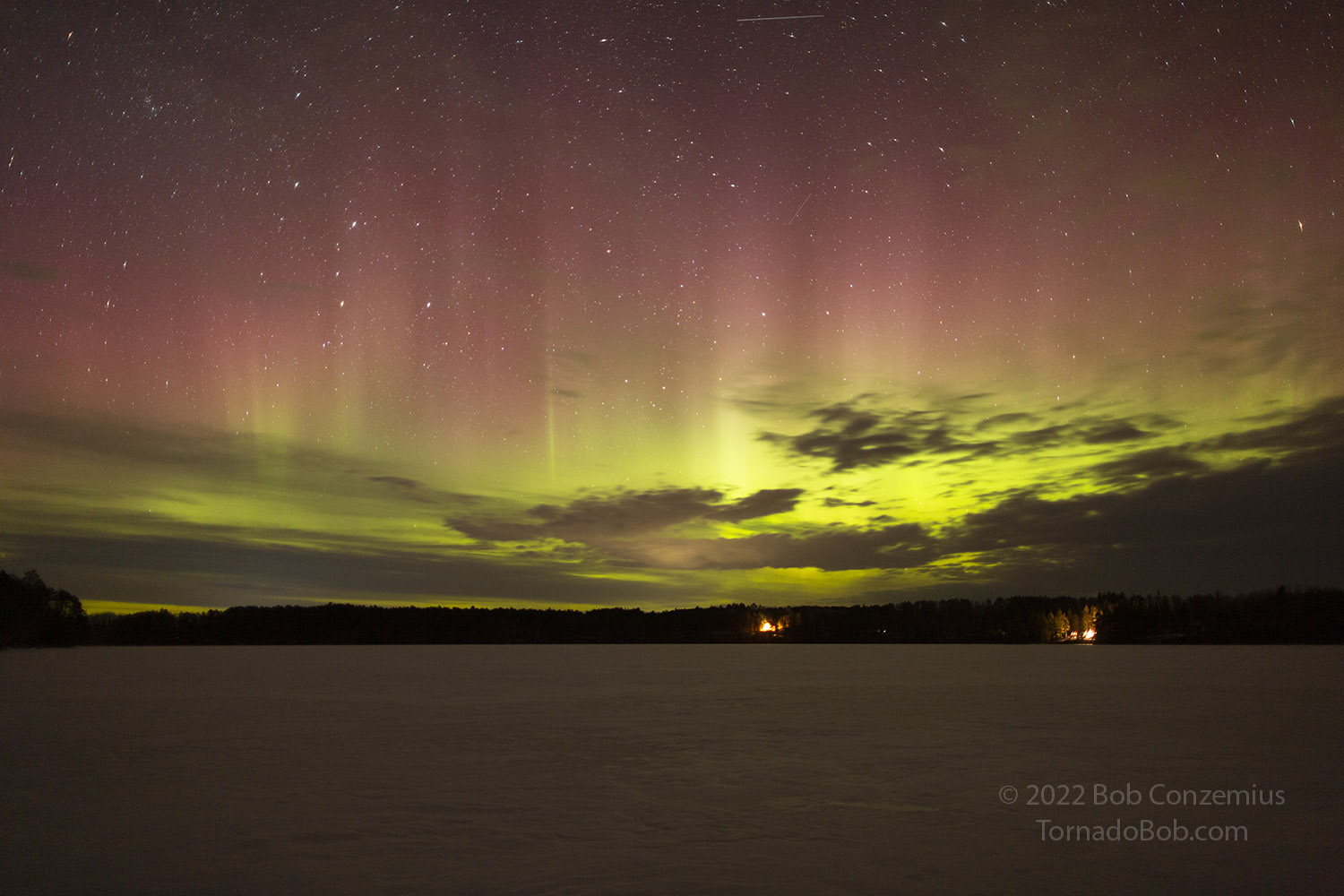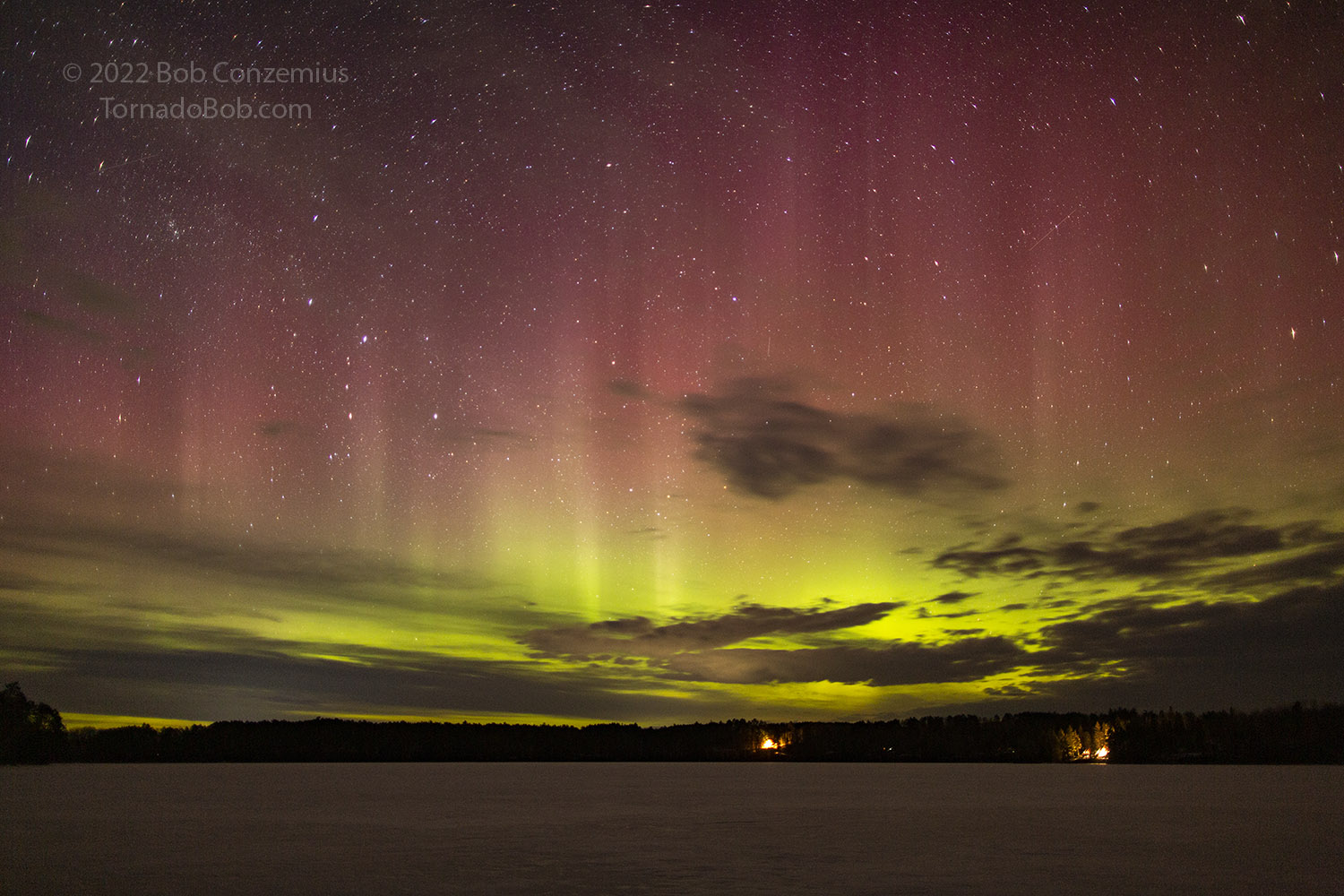April 2, 2022 Auroras
Caribou Lake (Itasca County)
The auroras put on a show this evening. We had an active week of solar flares that threatened to bring quite a show because of successive coronal mass ejections (CME) whose effects can multiply. The sunspot region that produced these flares was a very complex one-- thus the numerous flares. The first one produced a strong flare (M5+) with a CME travelling directly toward Earth. The following day, an X-class flare occurred, and it also launched a CME toward Earth. The initial CME was a bit disappointing, though, because its magnetic field was strongly north, preventing auroras from forming. Once the effects from this first CME diminished, Bz turned a bit more south. The X-class flare's CME probably hit at some point late on April 1, but its presence was not really obvious in the solar wind data. Nonetheless, Bz dropped into the negative upper single digits, and the solar wind speed hovered around 550 or 600 km/s. I decided to go out and shoot. It was mostly cloudy, but I hoped to find some larger breaks in the clouds.
I drove up to Caribou Lake, and it wasn't clear whether the auroras were out or not. Most of the northern horizon was covered in clouds. I saw a larger break in the clouds approaching from the west, so I decided to wait. By luck, the auroras brightened up when the skies became mostly clear. It was a nice show with tall, slowly moving columns. Those are the easiest to photograph. The rapidly dancing, bright ones are the best to watch in person, but they are so bright that to avoid overexposing them, you have to stop the camera down to the point that the rest of the sky looks really dark. Anyway, these ones looked fine with a ~15-second exposure.
I usually use a color temperature of around 4000K to make the sky look neutral or maybe a little blue, but the reds on these auroras were nice. I wanted to leave the color temperature around 5200 K, which is the default I have set for the camera. The sky might look more brown/red with these settings, and the auroras may look more yellow than green, but the reds really pop out as RED. Click on each of the images below to see the corresponding 4000K image.
 |
|---|
| This is the text that appears underneath the table. |
 |
|---|
| This is the text that appears underneath the table. |
 |
|---|
| This is the text that appears underneath the table. |